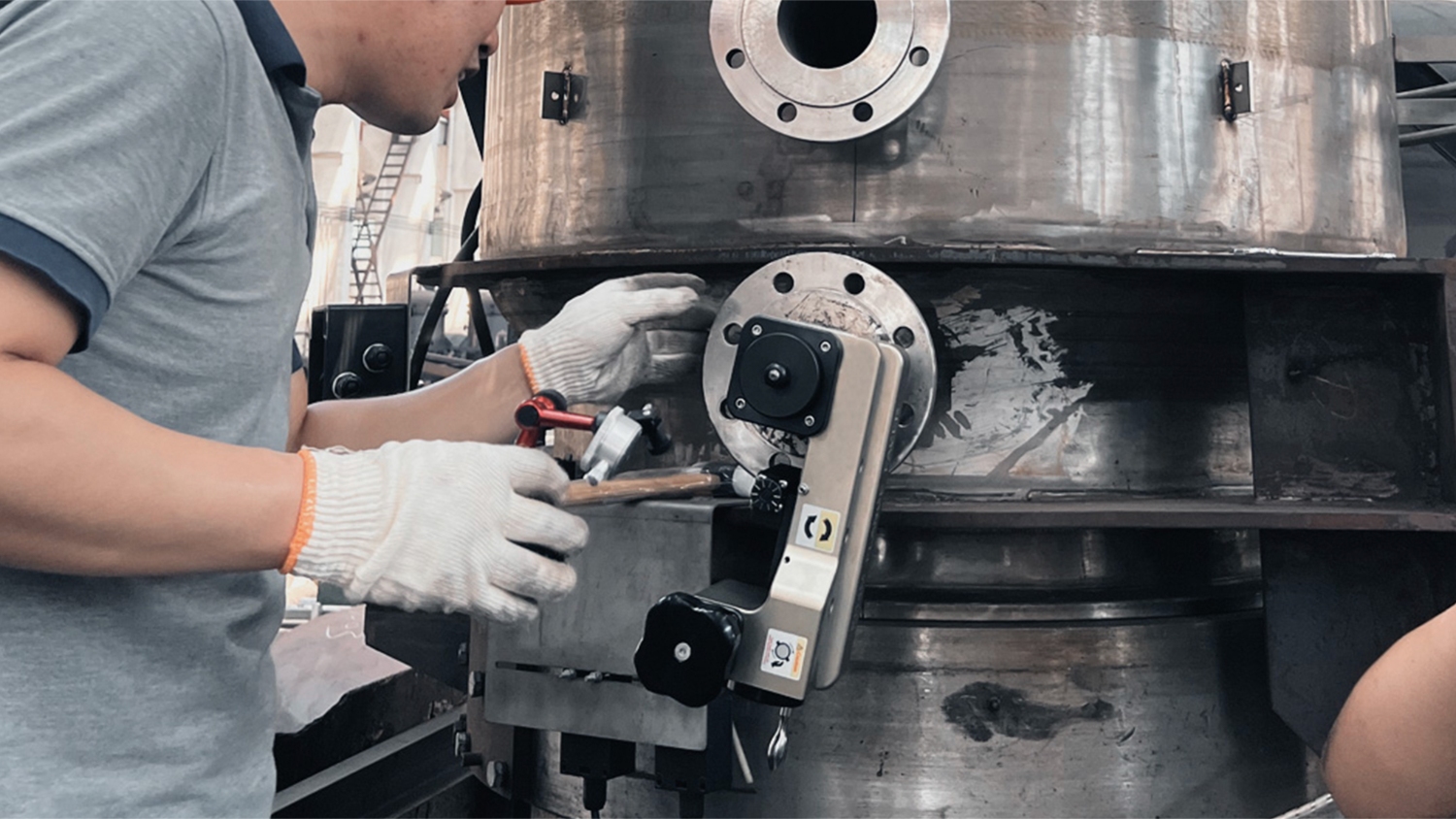As a professional equipment, flange facing machine is widely used in industrial production, especially in occasions that require precise connection and sealing. Its working principle is to cut the flange end face through a rotating tool to achieve the required flatness and roughness. However, in the actual operation process, due to various reasons, improper operation often leads to problems with the flange facing machine, which in turn affects production efficiency and product quality. This article will discuss in detail the various problems caused by improper operation and their causes.
Increased tool wear is one of the common problems of flange facing machines, which is manifested in a significant shortening of tool life and a decrease in cutting efficiency.
Cause analysis:
Irrational cutting parameters: such as too fast feed speed, too large cutting depth, etc., resulting in excessive load on the tool.
Insufficient cooling: The heat generated during the cutting process is not dissipated in time, which accelerates the wear of the tool.
The workpiece material is too hard: Some flange materials have a high hardness, which causes greater wear on the tool.
The decrease in machining accuracy is manifested in that the key indicators such as the flatness and verticality of the flange end face cannot meet the design requirements.
Cause analysis:
Inaccurate machine calibration: The machine tool is offset during installation or use and is not calibrated in time.
Improper fixture installation: The fixture is unstable or the positioning is inaccurate, causing the workpiece to move during processing.
Tool wear or improper selection: The tool is severely worn or an inappropriate tool type is selected.
Increased machine tool vibration and noise not only affect the working environment, but may also have a negative impact on the accuracy and life of the machine tool.
Cause analysis:
Tool imbalance: The tool is unbalanced or defective, causing vibration during cutting.
Spindle failure: The spindle bearing is damaged or poorly lubricated, causing machine tool vibration and noise.
Workpiece clamping is not firm: The workpiece is not clamped or the clamping method is incorrect, and it loosens under the action of cutting force.
Improper operation may lead to serious safety accidents, such as personal injury, machine tool damage, etc.
Cause analysis:
Violation of operating procedures: Failure to operate in accordance with the prescribed operating steps and safety specifications.
Lack of safety awareness: Insufficient understanding of potential safety risks and neglect of safety protection measures.
Inadequate equipment maintenance: The machine tool has not been maintained for a long time, which poses a safety hazard.

Reasonably adjust cutting parameters: According to the workpiece material and tool type, select the appropriate cutting speed, feed speed and cutting depth to ensure that the tool operates under reasonable working conditions.
Calibrate the machine tool regularly: Calibrate the flange end face machine regularly to ensure the accuracy and stability of the machine tool. At the same time, check and tighten the various parts of the machine tool to prevent loosening and displacement.
Choose the right tool: Select the right tool type and material according to the processing requirements to ensure that the tool has good cutting performance and durability. At the same time, regularly check and replace severely worn tools.
Strengthen workpiece clamping: Use appropriate clamping methods and tools to ensure that the workpiece remains stable and accurate during processing. For workpieces with complex shapes or easy deformation, special fixtures or auxiliary supports can be used.
Comply with operating procedures: Strictly abide by the operating procedures and safety specifications of the flange end face machine to ensure that the operator has the corresponding skills and qualifications. At the same time, strengthen safety education and training to improve employees' safety awareness.
Strengthen equipment maintenance: Clean, lubricate and inspect the flange facing machine regularly to detect and eliminate potential faults in time. For important components and wearing parts, they should be replaced and repaired regularly.
Improper operation is one of the important reasons for problems with flange facing machines. By reasonably adjusting cutting parameters, regularly calibrating machine tools, selecting suitable tools, strengthening workpiece clamping, complying with operating procedures, and strengthening equipment maintenance, we can effectively reduce problems caused by improper operation and improve the processing efficiency and product quality of flange facing machines.
As an exporter of flange facing machines from China, we are well aware of the impact of improper operation on equipment performance and processing quality. Therefore, before exporting, we will provide customers with detailed operating guides and professional training to ensure that they can use our equipment correctly and safely. At the same time, we also provide comprehensive after-sales services, including regular maintenance inspections and technical support to help customers solve any problems encountered during use.